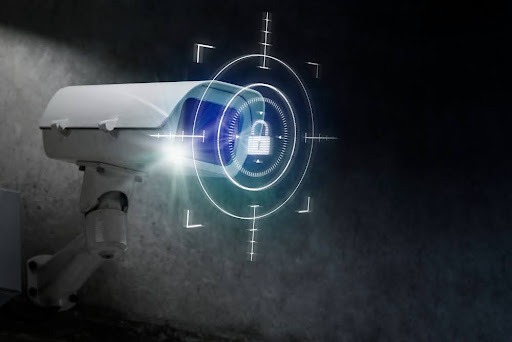Artificial Intelligence (AI) has transformed the CCTV and surveillance industry through its revolutionary impact on data-driven technologies and rapid technological progress in the current era. Traditional camera systems that used to function only through passive recording have evolved into smart security systems which make decisions in real-time. The implementation of AI-powered video analytics enhances security while creating more efficient monitoring systems and automation which transforms safety approaches.
The Evolution from Traditional to AI-Powered CCTV
The monitoring and analysis of conventional CCTV systems depends entirely on human operators. These systems deliver acceptable results in particular situations yet demonstrate weaknesses during extensive monitoring operations and quick emergency responses and security predictions. AI bridges this surveillance gap through its integration of machine learning algorithms and facial recognition and behavioral analytics into core surveillance operations.
AI technology enables CCTV systems to identify abnormal activities, identify crowd members by face, monitor camera-to-camera movement and trigger security alerts before criminal activities take place. Surveillance technology has witnessed a revolutionary advancement through the transition from traditional reactive security to modern proactive systems.
Core Artificial Intelligence Technologies have revolutionized the capabilities of CCTV surveillance systems.
Artificial Intelligence transforms basic CCTV systems into intelligent surveillance platforms which offer immediate warning systems and facial identification capabilities and predictive data analysis. The following list showcases fundamental technologies which power this transformation.
1. Facial Recognition and Biometrics
The most significant use of AI powered video surveillance exists through its ability to recognize faces. The system performs real-time face matching against extensive databases to both track people of interest and control access to protected areas.
The implementation of biometric verification provides enhanced security protection in locations with high security risks including airports and government buildings and financial institutions. These security systems provide both speed and precision which minimizes the chances of human mistakes.
2. Object Detection and Tracking
The artificial intelligence system in CCTV cameras has the ability to recognize and categorize different objects including vehicles and unattended bags. The system employs deep learning technology to identify multiple object categories and their behavioral patterns which enables it to trigger automatic alerts when restricted areas get accessed or objects remain in suspicious positions.
3. Behavioral and Motion Analysis
AI surveillance systems monitor behavior patterns of detected entities in addition to their identification. The advanced motion analysis tools monitor subjects to identify suspicious activities including loitering and aggression and trespassing and other behaviors that signal criminal intent.
Security teams gain the ability to act proactively through real-time behavior analysis which shortens their response time.
4. License Plate Recognition (LPR)
AI has transformed Automatic License Plate Recognition (ALPR) systems to deliver enhanced and faster license plate identification capabilities. These systems serve traffic management and parking enforcement and border control functions through their automated capabilities which enhance vehicular movement monitoring efficiency.
5. Cloud Integration and Edge Computing
AI surveillance systems benefit from cloud computing and edge devices to achieve greater processing power and scalability. Cloud platforms maintain centralized data storage and enable remote access together with digital tool integration yet edge computing processes information locally to enhance system responsiveness by reducing latency.
Benefits of AI in Modern Surveillance Systems
The combination of AI technology results in enhanced surveillance through improved threat identification capabilities and accelerated responses and diminished human mistakes. The following advantages serve as primary reasons why modern security systems adopt this approach.
1- Real-Time Threat Detection
AI systems operate with real-time threat detection functionality to deliver fast incident response and better public safety outcomes. When suspicious activity occurs the system automatically sends notification alerts to security personnel which enhances operational efficiency and could result in saving lives.
2- Reduced Human Dependency
AI technology supports security teams by minimizing their workload although human supervision stays necessary. Security personnel can use their attention to respond to critical alerts from the system while monitoring operational effectiveness.
3- Scalability and Customization
The nature of AI surveillance systems allows them to expand their capabilities according to demand. The adaptability of AI-powered CCTV networks allows them to serve offices of any size and smart cities without requiring extensive infrastructure modifications.
4- Cost Efficiency Over Time
The high initial costs of AI-driven CCTV systems lead to significant long-term financial benefits through reduced manpower expenses and decreased false alarm frequency and preventive incident prevention.
Various industries have adopted AI surveillance through Use Cases to lead the revolution in this field.
Several industrial sectors including retail and manufacturing have started implementing AI surveillance technologies to enhance security measures and operational efficiency and regulatory compliance. Several sectors currently lead the way toward this revolutionary change.
1- Smart Cities
AI-based surveillance systems deployed by smart cities worldwide enable the monitoring of public spaces and traffic control and crime detection and citizen safety protection. AI surveillance systems serve essential functions for crowd control operations during events along with protests and emergency situations.
2- Retail and Commercial Spaces
The implementation of AI-powered cameras by retailers serves dual purposes for security needs and behavioral analysis of customers to enhance store design and reduce theft incidents. Surveillance data-derived footfall analysis and heatmaps give businesses a strategic advantage to enhance their marketing strategies and customer service operations.
3- Banking and Financial Institutions
Finance sector operations require absolute security measures to be in place. AI surveillance systems combine detection capabilities for unauthorized access with suspicious behavior monitoring and fraud prevention to maintain full compliance with strict regulatory requirements.
4- Healthcare Facilities
AI CCTV systems provide hospitals and clinics with three main advantages: enhanced patient security combined with area restriction surveillance and faster emergency response capabilities. The combination of facial recognition technology with automated access systems creates a system that prevents unauthorized entry.
5- Educational Institutions
Schools alongside universities implement AI systems which track student movements while spotting security threats to protect students and faculty members in busy educational areas such as campuses and dormitories.
The Future of AI in CCTV and Surveillance
AI will merge more deeply with 5G, IoT and blockchain technologies to develop self-operating surveillance systems that will become increasingly smart in the future. The current surveillance tools such as predictive policing along with drone surveillance and real-time crime mapping mark only the start of what’s to come.
The upcoming wave of innovation will introduce adaptive systems which learn from their environments to provide intelligent forecasting capabilities alongside automated law enforcement assistance and deep behavioral analytics.
Conclusion: Embracing the AI-Driven Surveillance Era
AI transforms both surveillance observation methods and reshapes what security means in practice. The integration of AI into CCTV surveillance systems has transformed multiple industries by providing organizations with faster and more precise operational capabilities through instant alerts and deep behavioral analysis.
Businesses and governments that embrace AI surveillance today will be better equipped to handle the challenges of tomorrow’s security landscape.
Visit Classic Style Mag for more informative blogs.



